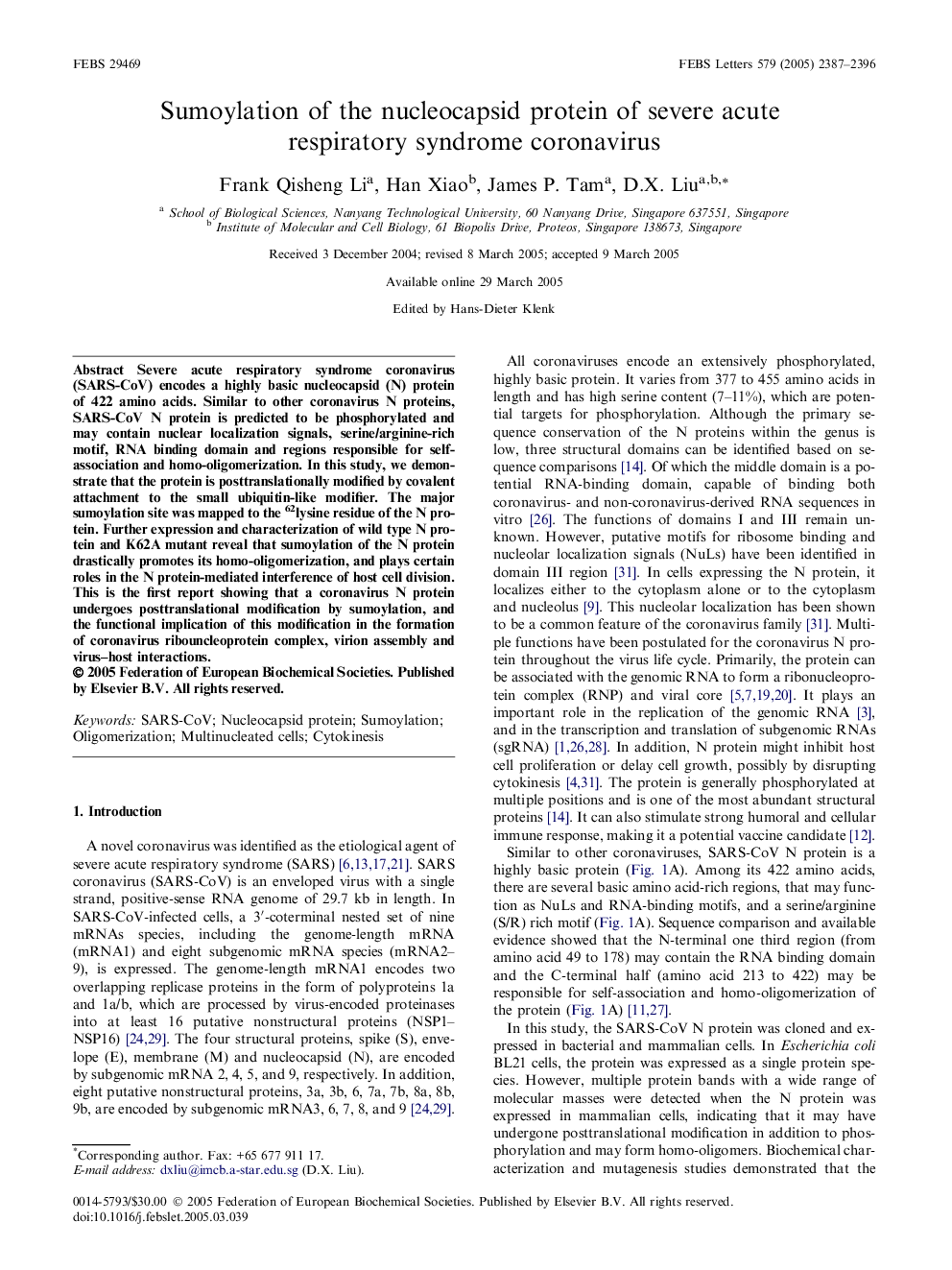| Article ID | Journal | Published Year | Pages | File Type |
|---|---|---|---|---|
| 2053304 | FEBS Letters | 2005 | 10 Pages |
Abstract
Severe acute respiratory syndrome coronavirus (SARS-CoV) encodes a highly basic nucleocapsid (N) protein of 422 amino acids. Similar to other coronavirus N proteins, SARS-CoV N protein is predicted to be phosphorylated and may contain nuclear localization signals, serine/arginine-rich motif, RNA binding domain and regions responsible for self-association and homo-oligomerization. In this study, we demonstrate that the protein is posttranslationally modified by covalent attachment to the small ubiquitin-like modifier. The major sumoylation site was mapped to the 62lysine residue of the N protein. Further expression and characterization of wild type N protein and K62A mutant reveal that sumoylation of the N protein drastically promotes its homo-oligomerization, and plays certain roles in the N protein-mediated interference of host cell division. This is the first report showing that a coronavirus N protein undergoes posttranslational modification by sumoylation, and the functional implication of this modification in the formation of coronavirus ribouncleoprotein complex, virion assembly and virus-host interactions.
Related Topics
Life Sciences
Agricultural and Biological Sciences
Plant Science
Authors
Frank Qisheng Li, Han Xiao, James P. Tam, D.X. Liu,
